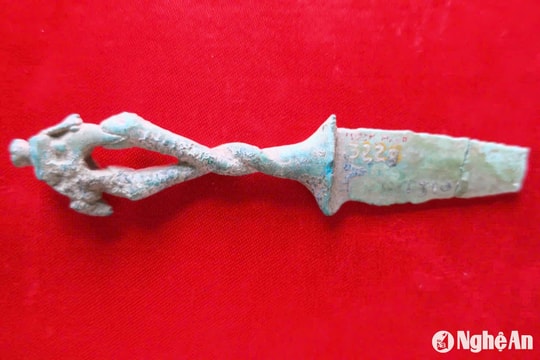Vietnam's 'national treasure' damaged more than 30% due to cleaning with dishwashing liquid
The repairman did not understand lacquer so he interfered too much with the painting "Spring Garden of Central, South and North".
Mr. Vi Kien Thanh - Director of the Department of Fine Arts, Photography and Exhibitions - has just reported to the Ministry of Culture, Sports and Tourism about the inspection and preservation of paintings.Spring Garden of North, Central, and Southby the late painter Nguyen Gia Tri. In 2018, the Ho Chi Minh City Fine Arts Museum assigned the task of cleaning the painting to Mr. Luu Minh Phung, a lacquer repairman in Ho Chi Minh City. Due to his lack of understanding of lacquer painting art, Mr. Phung used dishwashing liquid, talcum powder, and sandpaper to excessively interfere with the surface of the painting.
|
The painting "Spring Garden of Central, South and North" after being cleaned, is on display at the Ho Chi Minh City Fine Arts Museum on the afternoon of April 23. Photo:Mai Nhat. |
The Department's representative assessed that the spirit and space of the work had been damaged by about 30%. "Due to the impact on the surface, the work lost its surface paint layer, so the flexibility and sophistication of the connection between the red panels, eggshell panels, and gold-plated panels in Nguyen Gia Tri's paintings could no longer be maintained," commented Mr. Vi Kien Thanh. In terms of material, the work was damaged by about 15%, because the eggshell panels were exposed, the gold-plated panels were worn away, and the adjacent image panels were exposed, losing the flexibility between panels and lines.
|
The work "Spring Garden of Central, South and North" before cleaning. |
The Department of Fine Arts, Photography and Exhibitions recommends that the work is a "national treasure" and should be kept and preserved in a special regime. The Department proposes that the Department of Culture and Sports of Ho Chi Minh City direct the Fine Arts Museum to set up a project to carefully and scientifically restore the work, and to repair the damage in the best way possible. The museum should first test some locations on the painting, and assign the work to be repaired by painter Nguyen Xuan Viet - a student of the late famous painter Nguyen Gia Tri, one of the people who discovered the damage to the painting - or another painter with expertise and prestige in the profession.
|
Images of young girls on the painting. Many comments said that after being restored, the painting looks shiny as if it was painted, not lacquered. Photo:Mai Nhat. |
The Department believes that the leaders and staff of the Ho Chi Minh City Museum of Fine Artshave been arbitrary in the work of preserving and treating artifacts, especially national treasures, requiring them to learn from their experiences. The Department of Cultural Heritage also needs to soon advise the Ministry of Culture, Sports and Tourism to issue documents guiding the preservation of national treasures.
Previously, the art world was abuzz about the lacquer painting.Spring Garden of North, Central, and South(200x540 cm) damaged after restoration. The work was created by famous artist Nguyen Gia Tri starting in 1969 (when the country was still at war) and completed in 1989. The painting depicts a peaceful spring atmosphere with images of young girls from the three regions of Central, South, and North wearing traditional costumes, going to the spring festival in the setting of temples and trees.
|
Late painter Nguyen Gia Tri. |
The painting is a work of passion, applying many conclusions in lacquer art, is the largest in size and is one of the last creations of painter Nguyen Gia Tri. In 1990, the work was purchased by the People's Committee of Ho Chi Minh City to present to the Ho Chi Minh City Fine Arts Museum. The painting has been displayed and preserved here since then. In 2013, the Government recognized the work as a "National Treasure".
The famous painter Nguyen Gia Tri was born in 1908 in Ha Tay (now Hanoi). He graduated from the Indochina College of Fine Arts in 1936. He held his first exhibitions in 1939 - 1940. In 1954, he moved to Saigon to live and work.
Nguyen Gia Tri is considered one of the leading painters in creating a new trend in lacquer art. He contributed to bringing Vietnamese lacquer to its peak with the combination of traditional Asian cultural elements of the Vietnamese people on lacquer material and Western academic painting methods. In 1989, painter Nguyen Gia Tri was recognized by the Ministry of Culture as one of the contemporary painters who contributed to the construction of modern Vietnamese visual arts. He died in Ho Chi Minh City in 1993. He was posthumously awarded the Ho Chi Minh Prize for Literature and Arts in 2012.

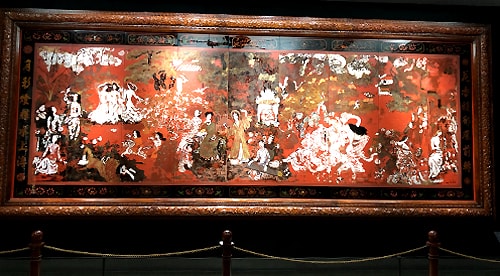
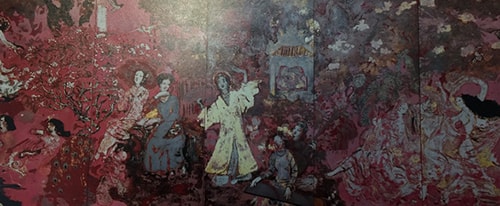
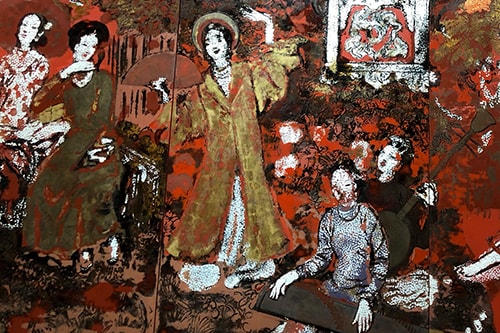
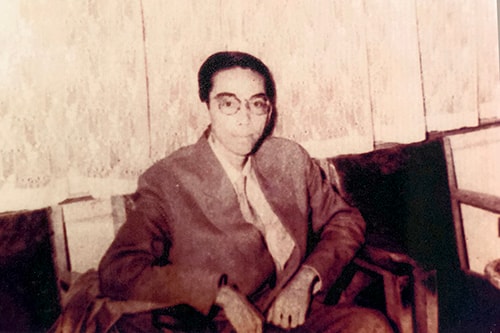
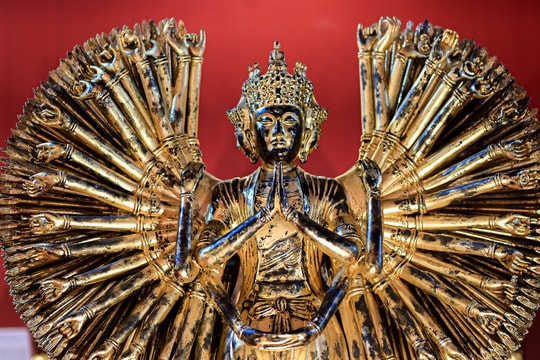

.jpg)
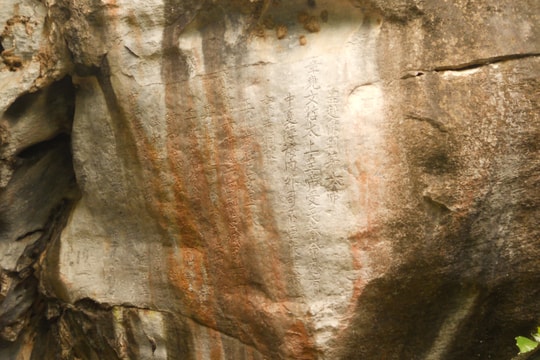
.jpg)
